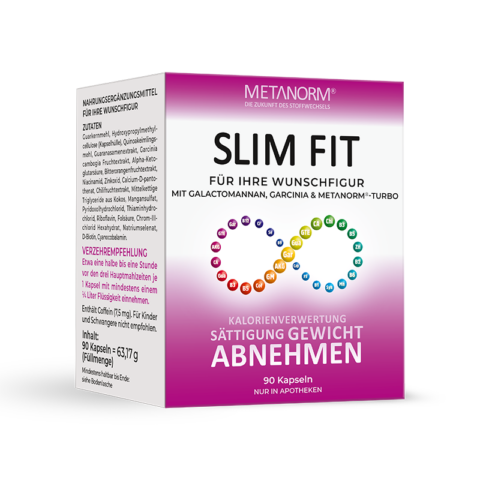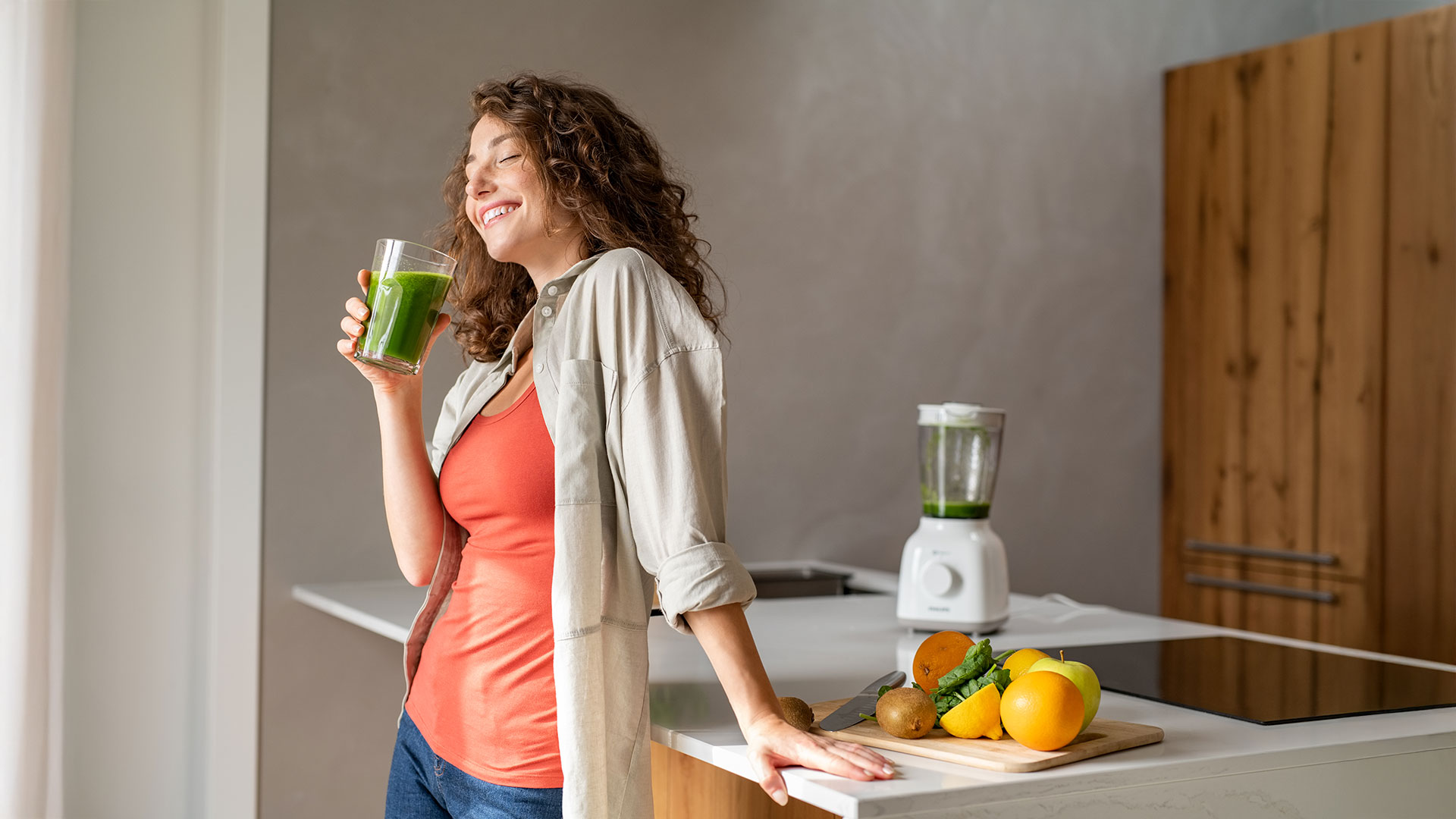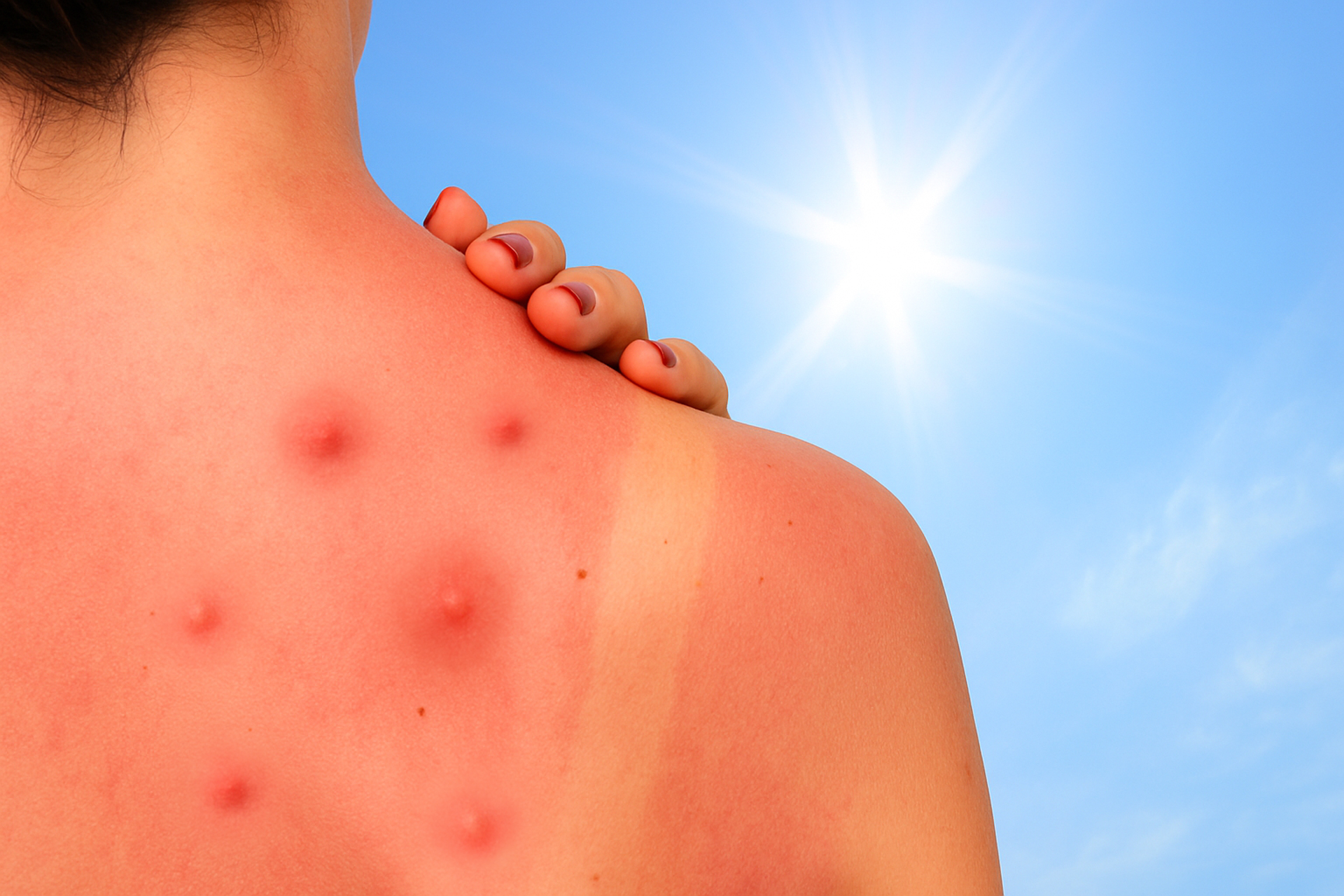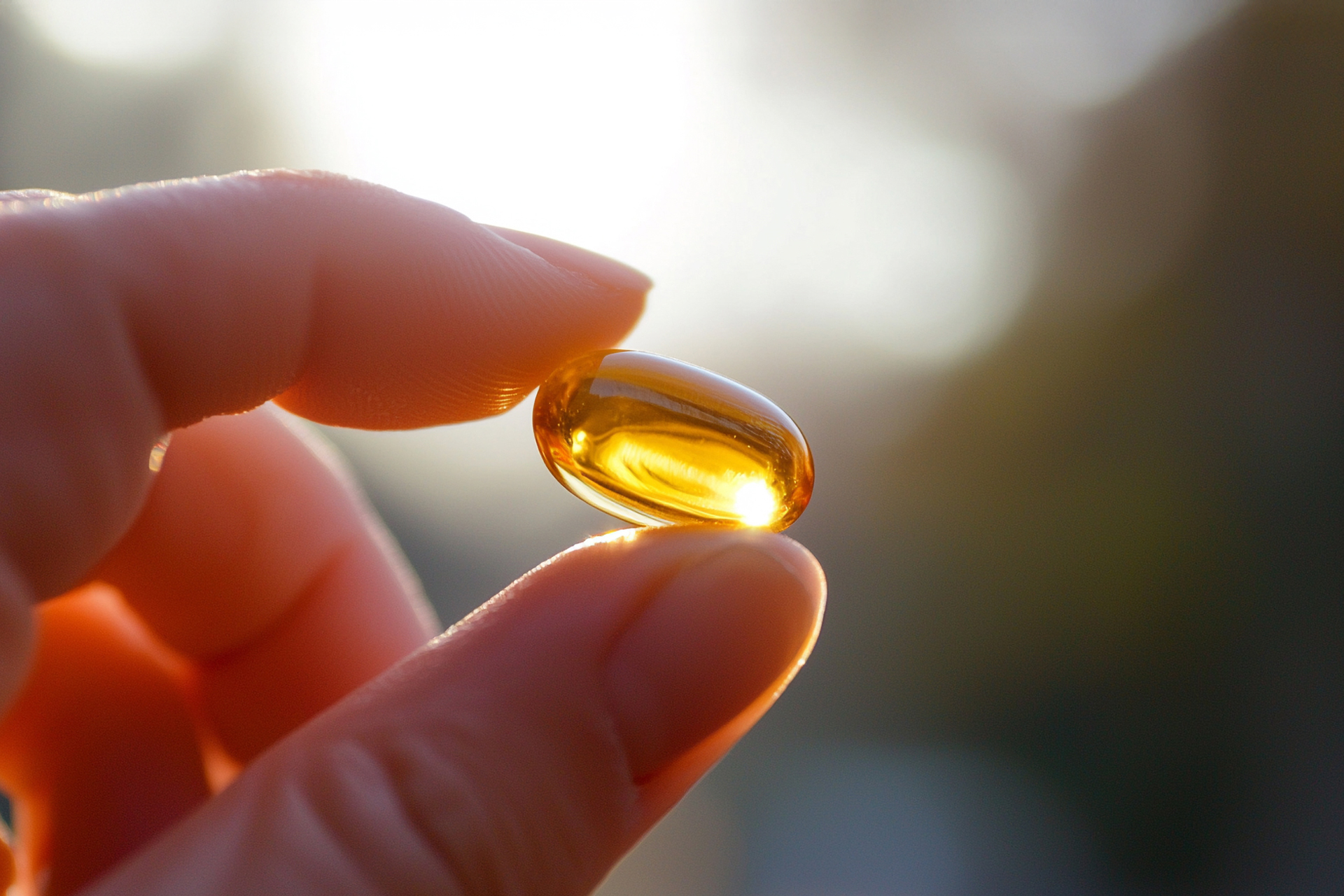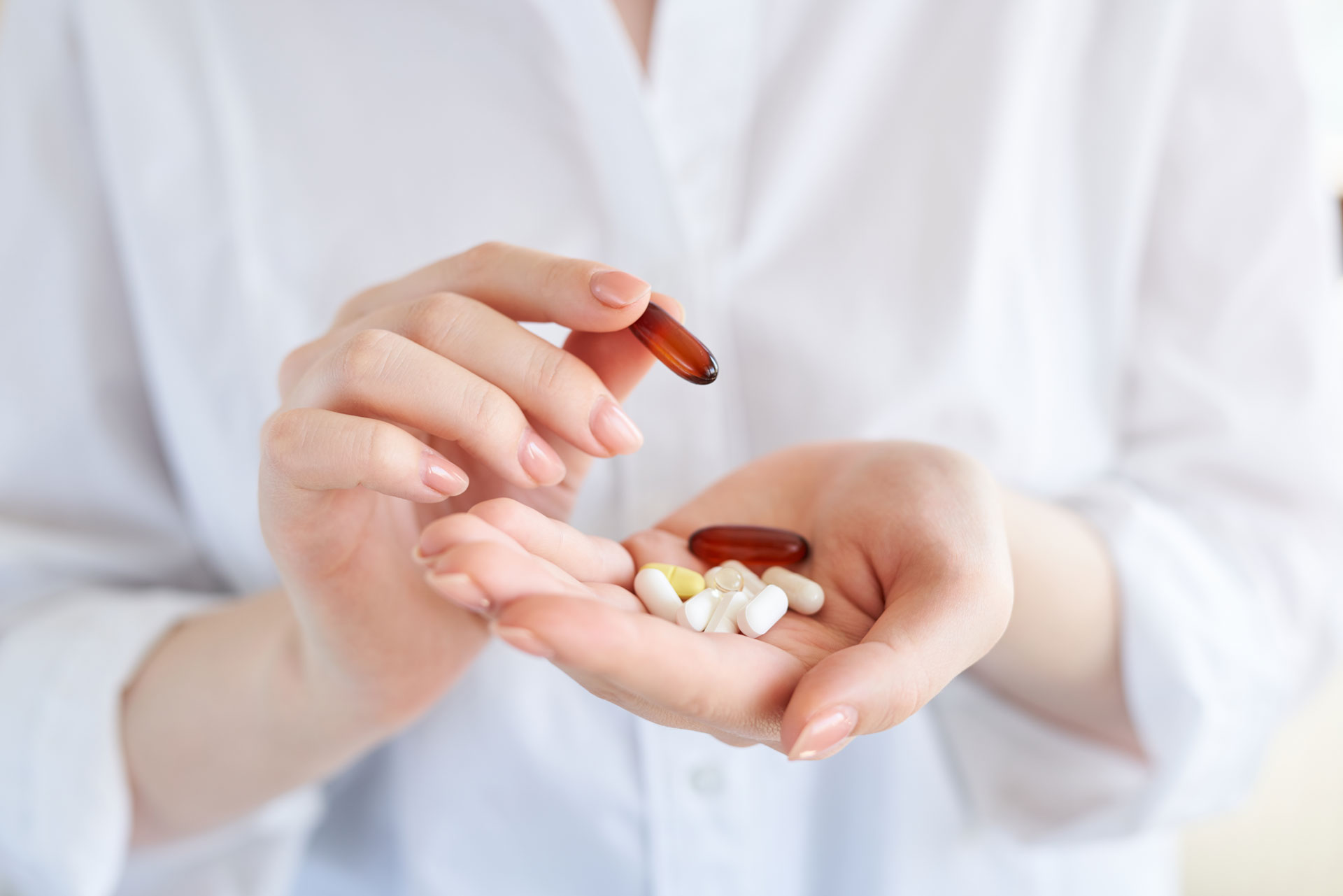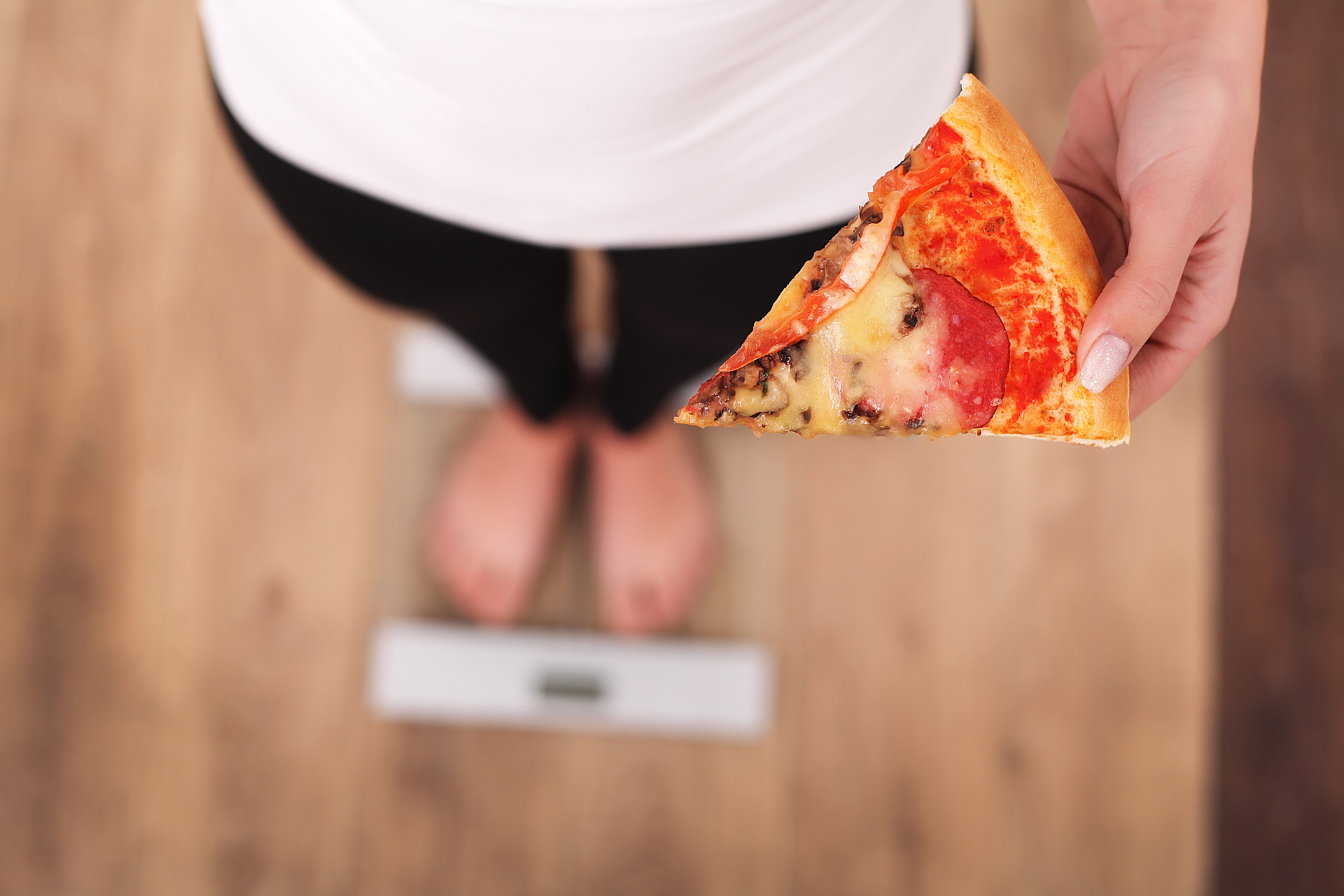
Lose weight without
starving
Eating a low-calorie diet with lots of vegetables, few carbohydrates and no sweets sounds simple, but usually fails due to a lack of time and a constant gnawing feeling of hunger. Especially in the evening, when work & co. no longer distract us, we are overcome by cravings.
How does a feeling of satiety develop?
Hunger is a subjective desire to eat. In addition to the psychological phenomenon of appetite, hunger is subject to a complex physiological control circuit. The regulatory centre of hunger and satiety is located in the hypothalamus, an area in the diencephalon. The first thing that happens in the stomach after ingesting food or liquids is distension. However, this distension alone does not trigger a feeling of fullness. Receptors in the intestine and liver react to the energy content of the food and so-called satiety hormones are produced. Studies show that proteins are the most satiating, followed by carbohydrates and finally fats.

Satiety hormones GLP-1 and insulin
GLP-1, a satiety hormone that has recently become increasingly well known, especially through so-called weight loss injections, reacts to the intake of proteins. As soon as 30 g of various essential amino acids (protein building blocks) have been ingested, more GLP-1 is produced, signalling to the body that it is full. Incidentally, the same result can also be achieved with just 3 g of leucine.
Insulin also influences the feeling of hunger: after ingesting carbohydrates, the insulin level rises, which makes us feel full. If it drops again, we feel hungry again. This is also the reason why hunger pangs occur more quickly after consuming food and drinks with a high sugar content. The insulin level rises very quickly here, but falls again even faster.

FULL AT THE TOUCH OF A BUTTON
So how do you reach the hurdle of 30 g of essential amino acids to boost the production of the satiety hormone GLP-1?
30 g of EAAs equates to:
- 200 g pulses
- 6-7 eggs
- 100 g ham
- 240 g peanuts (including 120 g fat)
- 250-460 g tofu (depending on quality)
As you can see, it is not so easy to get the required amount of amino acids from food every day!
If you instead consume 3 g of leucine with plenty of liquid (at least ¼ litre), it is possible to press the “satiety button” (stimulation of GLP-1 production) much more quickly and easily.

Targeted health improvement through advanced micronutrient supplements: with our products, this is no utopia, but a tried and tested reality.

